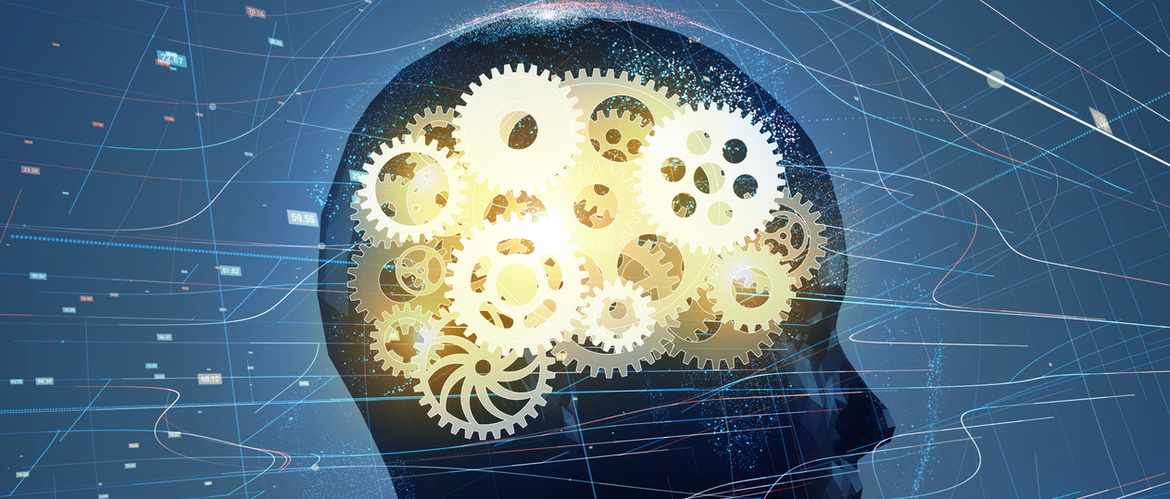
Many different combinations of symptoms lead to a diagnosis of depression, and the many different subtypes and symptoms of depression are produced by molecular, cellular, and network interactions in the brain. An overview of current understanding of these interactions was presented at ECNP 2021 by Professor Gitte Moos Knudsen, Copenhagen, Denmark.
Changes in the brain linked to major depressive disorder
Major depressive disorder is a heterogeneous disease with many combinations of symptoms1
"Although major depressive disorder (MDD) is often thought about as one disease, it is clear there are many subtypes", said Professor Knudsen, who highlighted current understanding of the variety of biological mechanisms linked to MDD, including:
- "Altered neurotransmission involving the monoamines and the glutaminergic and GABAergic systems. The monoamine theory for MDD based on a lack of serotonin and to some extent noradrenaline has prevailed many years", said Professor Knudsen, "but now the glutamatergic and GABAergic systems are also considered to play an important role".1
Altered neurotransmission in major depressive disorder involves the monoaminergic, glutamatergic, and GABAergic systems
- The stress response involving the hypothalamic-pituitary-adrenal axis and neurosteroids, with changes in neuroactive steroid signaling particularly affecting the GABAergic system.1,2
- Impaired neuroplasticity. Normally the brain adapts to what it learns leading to changes in the brain associated with increased synapses or production of new neurons in the hippocampal area, but this behavior is impaired in MDD.1
- Neuroinflammation1
The default mode network plays a role in major depressive disorder
"In addition, different brain regions interact to form a neural network providing connectivity between different brain regions", said Professor Knudsen. Some of these networks play a role in MDD, for example the default mode network.3
Anatomic changes in the brain in MDD include:
- Impaired neuroplasticity and neurogenesis, glial-cell mediated damage and neuroinflammation microscopically. Impaired neuroplasticity and neurogenesis are evident on molecular imaging as decreased synaptogenesis1
- A variety of gray and white matter changes, most notably hippocampal atrophy, macroscopically1
Hippocampal atrophy is a notable anatomic change in major depressive disorder1
Impaired adaptive signaling results in the core symptoms of major depressive disorder2
A video was played during Professor Knudsen’s presentation to explain adaptive signaling in the interconnected neuronal networks in the brain. Adaptive signaling allows the brain to respond and adapt to stimuli, seeking to restore homeostasis through excitatory, inhibitory, and modulatory signaling.3
- GABA and glutamate are the primary inhibitory and excitatory neurotransmitters, respectively
- The less prevalent monoaminergic neurons are modulatory
The GABA/glutamate balance is critical for all neuronal network functions including regulation of monoaminergic pathways.3
The GABA/glutamate balance regulates monoaminergic pathways
Professor Knudsen explained that impaired adaptive signaling (i.e. impaired ability for the brain to respond and adapt to stimuli):
- Is associated with altered neurotransmission and changes in neuroactive steroid signaling4
- Results in dysregulation of neuronal networks,5 which in turn are linked to the core symptoms of major depressive disorder (MDD) — depressed mood, anhedonia, feelings of worthlessness or excessive guilt, suicidality, and sleep difficulties6
The core symptoms of major depressive disorder are linked to impaired adaptive signaling
Professor Knudsen highlighted that in the future the identification of biomarkers involved in these mechanisms will enable patient stratification into different subtypes and facilitate a precision medicine approach with more individualized treatment.
Educational financial support for this symposium was provided by Sage Therapeutics and Biogen.
ECNP : European College of Neuropsychopharmacology
MDD : Major Depressive Disorder
GABA: Gamma-aminobutyric acid
BE-NOTPR-0122; approval date : 03/2022



